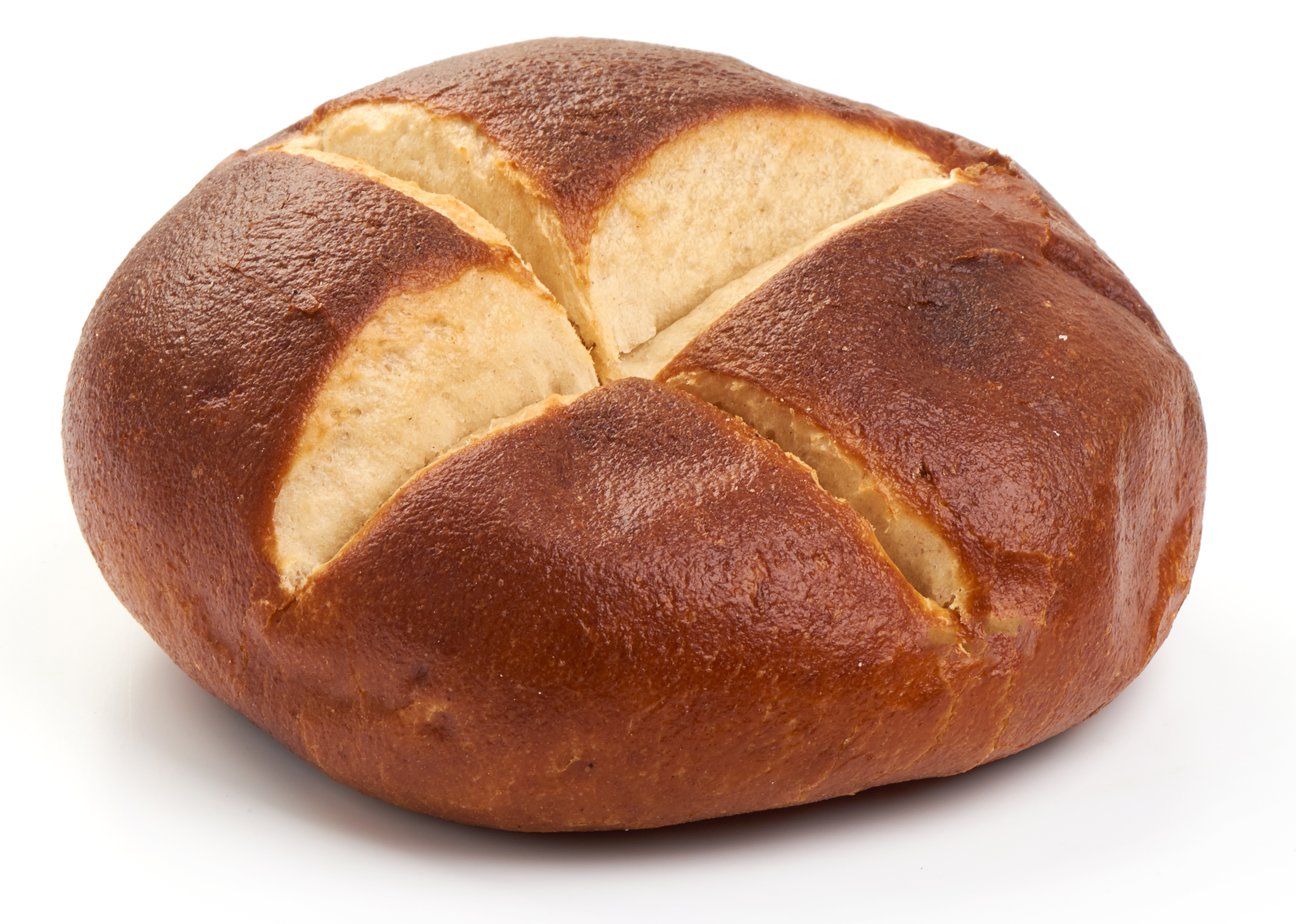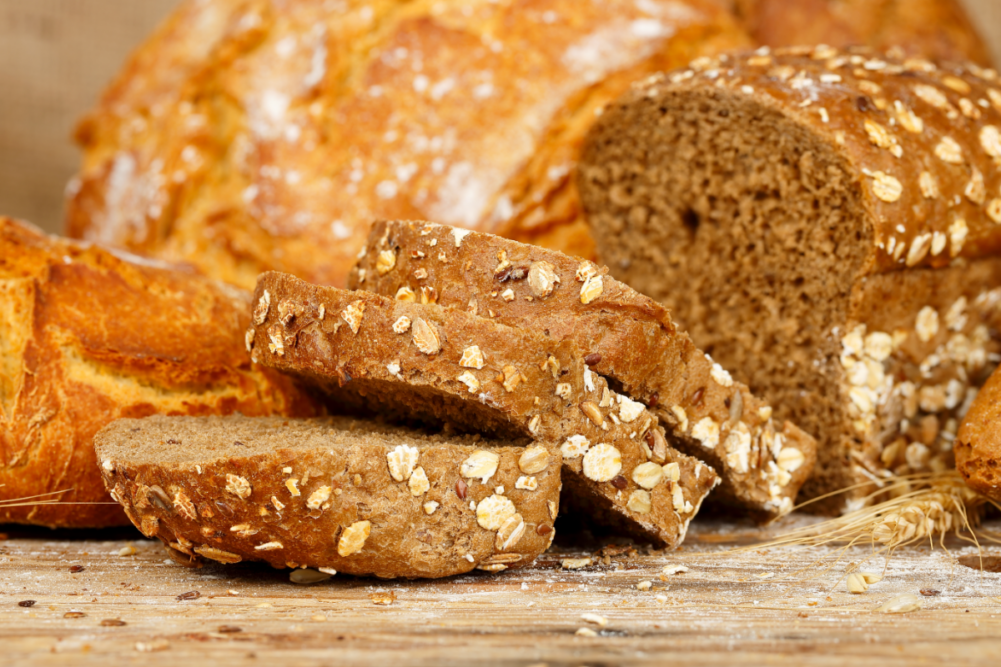CHICAGO— The “Dietary Guidelines for Americans 2020-2025” state that more than 90% of women and 97% of men do not meet recommended intakes for dietary fiber, with such deficits associated with health risks. That’s where fiber enrichment of baked goods, a traditional source of grain-based intrinsic fiber, helps consumers get closer to their intake goals. While there are many fiber ingredients, bakers may want to explore those that provide function to the recipe, such as those that can eliminate gluten in bread or reduce sugar in cookies.
Family-owned and operated Royo Bread Co., New York, is rolling out a low-calorie, keto-friendly artisan bread containing 30 calories, 2 grams of net carbohydrates and 11 grams of fiber per slice. Wheat resistant starch is the first ingredient. Other fiber sources include wheat protein, wheat bran, whole grain rye flour, ground flaxseed and psyllium husk.
“Flaxseed is high in omega-3 fats as well as fiber,” said Ronit Halaf, a registered dietitian who founded the company with her baker husband, Yoel Halaf, in 2019. “Psyllium husk is a vital ingredient in all of our products. It contains soluble fiber and insoluble fiber, which helps increase fullness, slow digestion and, most importantly, keeps you regular. Wheat protein, otherwise known as wheat gluten, is essential for holding our products together. It contains trace amounts of wheat and is a rich source of fiber, vitamins and minerals.”
For Nature’s Path, Richmond, British Columbia, eliminating added sugar in granola was its focus. But the ingredient technology added fiber to it as well.
“People are worried about the amount of sugar they are consuming,” said Arjan Stephens, general manager, Nature’s Path. “Our new granolas contain 0% added sugar but are still 100% delicious.”
The granola comes in Vanilla Almond Butter and Mixed Berry flavors, with one serving providing 17 grams of whole grains. That does not all translate into fiber, however, as one serving contains only 3 grams. This still allows for a high fiber claim. The secret behind the cereal’s sweet taste is its star ingredient: date powder.
“Dates are also high in fiber, which is fantastic for digestive health,” Mr. Stephens said. “And their fiber content makes dates a low-glycemic food.”
While most Americans are aware that they need to consume more fiber and less sugar, it’s not an easy task. They’re not willing to sacrifice quality and enjoyment.
More than half of consumers associate fiber with benefits like healthy digestion, according to ADM Outside Voice research. Further, 56% of consumers say they are adding or increasing fiber in their diets, reports The Hartman Group in its “Reimagining Well-being Amid COVID-19, 2021” report.
“However, added fiber can also be associated with digestive distress,” said Sarah Diedrich, marketing director, sweetening solutions and fibers, ADM. “Our research finds nearly 70% of consumers would not purchase a product again if it caused gastrointestinal discomfort.”
Growing ingredient toolbox
Fibers function differently in formulations and in the body. Some bring unique attributes to baked goods.
CK Ingredients, for example, offers lupin bean products that contain 34% fiber along with 40% protein, with the ratio of insoluble to soluble fiber being 3:1. In addition to boosting nutritional value, lupin offers many functionalities.
“Lupin flour can extend the natural lusciousness of eggs and butter without the oiliness or eggy flavor,” said Colleen Madden, vice president of innovation, CK Ingredients. “Lupin flakes are rolled and are functionally similar to thick-cut rolled oats. They are golden in hue and chewy with a lot of visual appeal.”
Lupin possesses a unique flavor that adds complexity and depth to baked goods. It goes well with strong, rich brown flavors, such as chocolate, coffee and cinnamon.
“A simple sugar cookie is too two-dimensional for lupin, as it is simply sweet and buttery,” Ms. Madden said. “Chocolate chip cookies are the perfect application. The lupin offers a nutty, umami eating experience with crispy edges and a cakey middle. Further, the flavor complexity allows for as much as a 50% sugar reduction, allowing the chocolate chip flavor to pop.”
Because of the protein content, lupin contains more calories — about 3.5 per gram — than most other fiber ingredients. But that protein content helps make traditional carbohydrate laden baked foods more appealing to high-protein dieters.
“Since lupin is synergistic with almond flour, for keto recipes, for example, it can offer a calorie reduction by replacing up to 50% of the almond flour,” Ms. Madden said. “Lupin is a ‘freak’ in the bean world since it is the only bean without starch. It helps you eat more fiber and protein and less starch and sugar.”
Chicory root fibers are well recognized for their ability to assist with sugar reduction, while adding fiber and reducing calories in baked goods. Some assist with fat reduction, too.
“Our natural, soluble and non- GMO chicory root fibers, inulin and oligofructose, can be easily incorporated to increase the fiber content in snack foods and baked goods,” said Kyle Krause, product manager for functional fiber and carbohydrates, BENEO. “Oligofructose can also be used in conjunction with high-intensity sweeteners to help mask undesired off-tastes.
“The fiber provides a neutral flavor, which enables smart sugar reduction while maintaining taste and texture of the final baked good,” Mr. Krause said. “Additionally, inulin can help to reduce the fat content of baked goods, particularly with long chain inulin, which has texturizing capability. Inulin can stabilize water into a creamy structure, mimicking fat, which is important for fillings.”
BENEO’s inulin and oligofructose are obtained from chicory root via a gentle hot water extraction. This harvesting from nature distinguishes it from certain other fibers that are made indigestible by chemical and enzymatic modifications.
All of the fiber within inulin and oligofructose is soluble and provides 2 calories per gram. Both powders and liquid ingredients are available to meet formulation and production requirements.
“Due to their solubility, products using these fibers avoid grainy mouthfeel,” Mr. Krause said. “They also act as a humectant, helping baked goods remain soft over time by binding water.”
Organic inulin agave is a soluble dietary fiber in Ingredion Inc.’s portfolio. Extracted from the agave plant, this fructan-type dietary fiber contributes 1.98 calories per gram and contains 93% dietary fiber with a touch of natural sweetness. The inulin travels to the large intestine where it is digested by beneficial bacteria. It has a low viscosity, even at levels as high as 15%.
Preventing a taste impact
ADM offers a dietary soluble corn fiber that helps increase total soluble fiber in baked goods without affecting aroma, flavor or texture. It requires minimal formulation and process adjustments. It can also be used in reduced-sugar recipes to build back lost functionality and help lessen sugar content. It is made with US-grown corn, with a non-GMO option available. Ingredient declaration is soluble corn fiber or soluble vegetable fiber (corn).
“Our soluble corn fiber is available in both dry and liquid formats,” said Olivia Rhode, global snacks lead, ADM. “Bakers can use our unique fiber ingredient in the same way they would standard sugar, honey or syrups.
“Off notes and abnormal texture are two sensory attributes often associated with added fiber in baked goods, which are compensated for by adding masking flavors or mouthfeel enhancers to a formulation,” Ms. Rhode said. “Our soluble dietary fiber, however, improves mouthfeel and masks off notes on its own. It’s neutral in flavor and color and is also water soluble with excellent clarity.”
Soluble corn fiber can also be used to reduce sugar in baked goods without negatively impacting structure. This is something that often happens when sugar is reduced, as sugar is important for bulking and binding in baked goods, and this functionality can be lost if sugar is removed.
“Our fiber ingredient is a great solve for this challenge, as it builds back structural integrity in 30% to 50% reduced-sugar formulations,” Ms. Rhode said. “On top of that, it brings down sugar content and reduces calories, delivering purposeful, indulgent options to health-conscious consumers.”
Longer chains of fiber
ADM’s soluble dietary fiber is classified as a low- FODMAP ingredient. FODMAP refers to Fermentable Oligosaccharides, Disaccharides and Polyols. Staying away from these carbohydrates can avoid some of the digestive discomfort that people can feel when consuming a lot of fiber.
“These are short-chain carbohydrates that can cause intestinal discomfort for some people,” said Kirsten Benneter, senior technologist, Ingredion Inc. “Longer chain, highly resistant fibers, such as our modified potato starch, can be a great choice to minimize this type of gastrointestinal discomfort.”
ADM’s modified potato starch is classified as a resistant starch type 4 (RS4). It contributes 0.47 calories per gram and is 74.2% fiber.
 “It’s a rising star in the keto and gluten-free bakery space,” Ms. Benneter said. “We typically recommend using it at 5% to 30% in a baked good.”
“It’s a rising star in the keto and gluten-free bakery space,” Ms. Benneter said. “We typically recommend using it at 5% to 30% in a baked good.”
In a low-carb pretzel bun, the modified potato starch can be used to directly replace wheat flour. At a usage rate of about 18%, calories are decreased by 27% and the dietary fiber content is increased to 16 grams per serving.
“Net carbs are also reduced by almost 35%,” Ms. Benneter said. “There are certain considerations to keep in mind when making this switch. In some applications there may be a light decrease in volume and increased residual mouthcoating. The switch is very easy to make for the added benefits, and no additional water is required to reach the desired dough hydration and consistency.”
In gluten-free applications, a higher percentage of modified potato starch can be used to replace the bulk flour. Another consideration is that some structure may be lost when replacing the bulk flour. Hydrocolloids and starches can build back some texture and structure.
If higher fiber is desired, but gluten-free is not, vital wheat gluten may be used to build back structure. And additional water will help decrease any powdery aftertaste, Ms. Benneter said.
Another low-FODMAP fiber from Ingredion is derived from tapioca. It contributes 0.32 calories per gram and is 80% dietary fiber.
“The modified tapioca starch is a cost-effective, high fiber RS4 resistant starch and is intended for those who prefer tapioca on the label and the functionality that it brings,” Ms. Benneter said. “It improves the machineability and sheetability of baked and extruded snacks and has also been shown to enhance expansion.”
MGP Ingredients Inc. offers RS4 resistant wheat starch in cook-up and pregelatinized versions. The cookup variety contains more than 90% total dietary fiber and contributes 0.35 calories per gram, while the pregelatinized option is more than 75% total dietary fiber with a caloric contribution of 0.82 per gram. Both appear on ingredient legends as modified wheat starch.
“When combined with a wheat protein, such as wheat protein isolate or vital wheat gluten, it can be used to replace all the wheat flour in low net-carb or keto formulation while providing the texture, structure and mouthfeel of a conventional wheat-based product,” said Tanya Jeradechachai, vice president of ingredient solutions and
The pregelatinized ingredient provides fat replacement benefits in addition to adding fiber and reducing calories. When it is hydrated, it absorbs twice its weight of water and assumes a fat-like texture that can partially or totally replace fat in baked products.
“Pregel RS4 resistant wheat starch is compatible with flour-based baked products, so there will be no impact on taste and texture profile,” Ms. Jeradechachai said. “Both RS4 ingredients are low-FODMAP Certified, thus, they contribute to digestive wellness, especially for people suffering from irritable bowel syndrome.”
With multiple fiber-rich options available, bakers have the ability to choose ingredients that will not only provide a nutrition boost but also some functionality.






